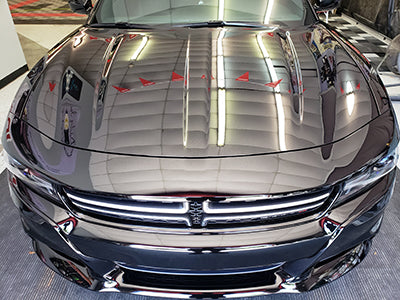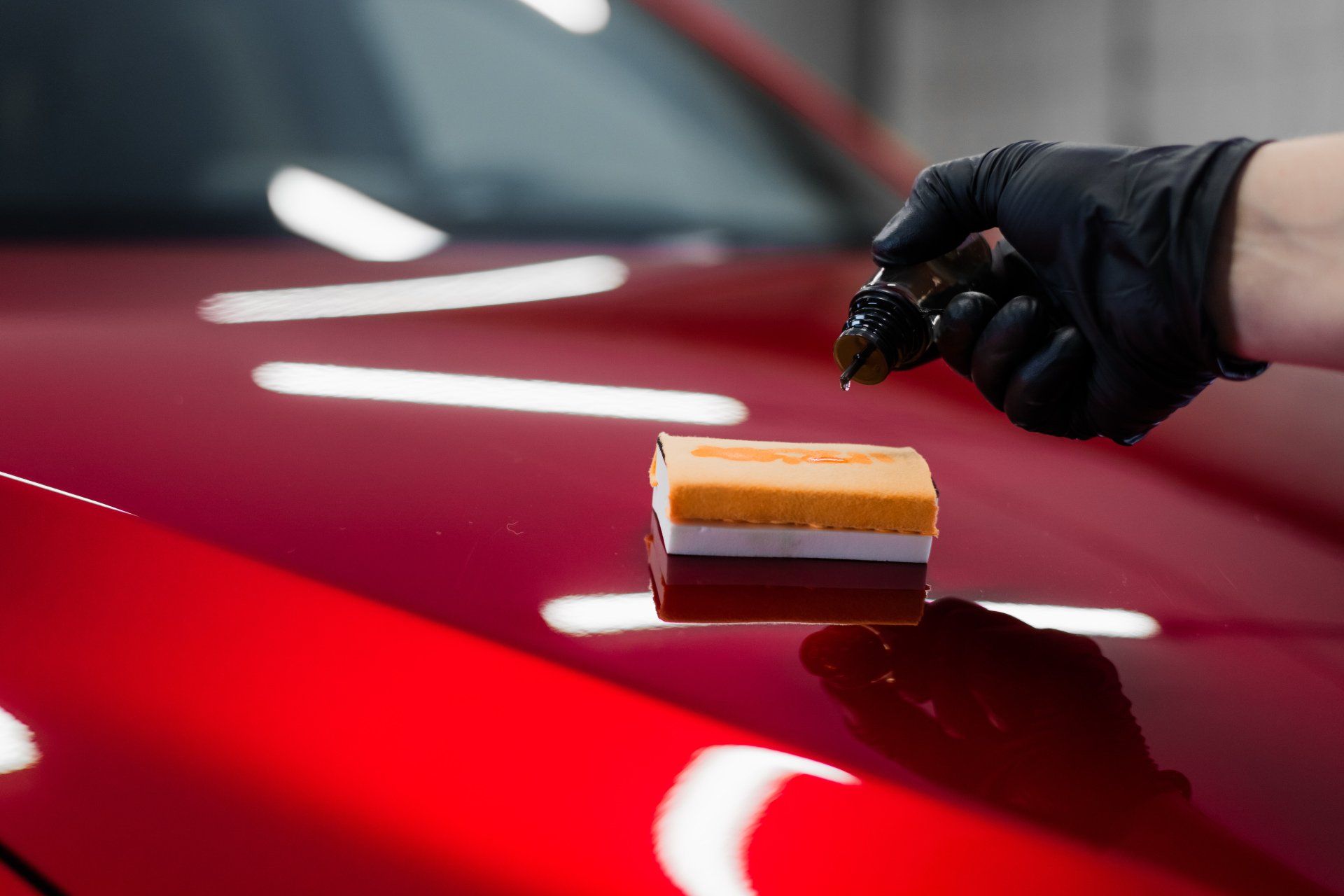The Role of Ceramic Coating in Enhancing Your Car's Resale Value
The Role of Ceramic Coating in Enhancing Your Car's Resale Value
Blog Article
The Relevance of Ceramic Coating: Protecting Your Cars and truck's Outside With Accuracy
In an era where maintaining the visual and practical honesty of your car is extremely important, ceramic layer emerges as a pivotal option. With its unique bonding homes, ceramic covering provides a level of security that far surpasses typical waxing approaches.
Advantages of Ceramic Coating
When it comes to preserving an auto's visual charm, ceramic coating supplies significant benefits. This innovative protective layer supplies a long lasting shield against environmental impurities, including dust, crud, and dangerous UV rays. By creating a semi-permanent bond with the automobile's paint, ceramic coverings successfully stop oxidation and fading, making certain that the car keeps a glossy, showroom-like finish for an extensive duration. This not only boosts the automobile's visual allure but also adds to its lasting worth.
In enhancement to its safety qualities, ceramic coating uses remarkable hydrophobic homes, triggering water and other liquids to grain off effortlessly. This attribute simplifies the cleansing process, as dirt and debris are much less likely to adhere to the surface, reducing the regularity and effort required for maintenance. Furthermore, the layer's resistance to chemical stains from acidic contaminants like bird droppings and tree sap is an additional significant advantage, lessening potential paint damage.
Ceramic coverings additionally boost scratch resistance, providing a layer that can take in small abrasions and swirl marks. This attribute is especially beneficial in preserving an immaculate surface area, reducing the possibility of noticeable flaws and protecting the honesty of the car's paintwork gradually.

Just How Ceramic Covering Works
Recognizing the mechanics behind ceramic coating reveals its efficiency as a safety service for cars. Ceramic coatings are basically fluid polymer applications that chemically bond with an automobile's factory paint, producing a safety layer.
Application of ceramic finishing entails a careful procedure. At first, the vehicle's surface area should be thoroughly cleaned and decontaminated to make certain optimal attachment. As soon as used, the fluid polymer develops a semi-permanent bond with the paint, hardening into a clear, sturdy guard. This guard enhances the automobile's gloss and hydrophobic homes, assisting in much easier cleaning by triggering water and contaminants to bead and slide off effortlessly.
In addition, the finish's molecular structure supplies resistance to minor scratches and chemical spots. Unlike waxes or sealants that sit on top of the paint, ceramic finishings incorporate with the surface area, using lasting security. This integration is basic to its efficiency, making certain the vehicle's surface stays pristine for many years.
Contrasting Ceramic Coating to Alternatives
In the realm of automobile defense, ceramic finish stands as a formidable option when compared to standard choices such as waxes and sealers. While waxes supply a short-term lustrous surface, normally lasting just a few weeks to months, ceramic layers give a longer-lasting remedy, usually enduring for many years. This longevity is credited to the chemical bonding that takes place when ceramic coatings are applied, forming a strong layer that is immune to ecological risks.
Contrastingly, sealants, although even more resistant than waxes, still fall short of the robust protection provided by ceramic coverings. Sealants can generally last helpful hints for as much as a year, providing an artificial shield versus certain elements. They lack the superior hydrophobic properties and UV security that ceramic coverings supply.
Moreover, ceramic finishes offer boosted scrape resistance, which neither waxes nor sealers can successfully match. In recap, while typical waxes and sealers provide basic protection, ceramic finishes provide a thorough, long-lasting remedy that dramatically protects the vehicle and improves's exterior coating.
Application Refine Clarified
Applying ceramic finishing to a vehicle requires a meticulous process to make certain optimal results and resilience. The first action includes thoroughly cleaning up the cars and truck's surface to get rid of dirt, grease, and previous waxes. This is essential for ensuring the covering sticks appropriately. A pH-neutral shampoo and a clay bar treatment are usually utilized to attain an immaculate surface. When cleaned, the car is dried and polished to eliminate any kind of flaws, as any type of existing scratches or swirls can become more noticable after the finishing is used.
Following surface area prep work, the application of the ceramic finishing starts. Making use of an applicator pad, the ceramic layer is used in little areas to make sure even insurance coverage.
After application, the finishing calls for a specific healing duration, throughout which the car should be protected from water and pollutants. This curing procedure can differ depending upon the product but typically varies from 24 to 48 hours. Ultimately, this thorough process is pivotal in accomplishing a durable and shiny finish.
Upkeep Tips for Durability
To maintain the long life of a ceramic covering, adherence to a regimented maintenance routine is essential. Regular washing is paramount; make use of a pH-neutral cars and truck shampoo and soft microfiber mitts to avoid abrasions. Avoid automated automobile cleans, as their harsh brushes can compromise the layer's honesty. Rather, choose a hand wash to guarantee thorough yet gentle cleansing.
Post-wash, drying the vehicle with a tidy microfiber towel avoids water spots that may weaken the finishing with time. Furthermore, use a ceramic covering booster every visit few months. image source These boosters enhance the hydrophobic homes and improve the finish's protective capacities, ensuring it remains efficient versus pollutants.
Remember that auto parking places play an important function in maintenance. ceramic coating. Whenever feasible, park in shaded locations to decrease UV exposure, which can progressively compromise the layer. For lasting storage space, take into consideration using a car cover for included security against environmental components
Conclusion
In conclusion, ceramic covering serves as a vital safety layer for car exteriors, using resilient defense against ecological aspects such as dust, uv, and gunk rays. Understanding the application process and adhering to upkeep suggestions are important for optimizing the long life and performance of ceramic covering.
When it comes to maintaining an automobile's aesthetic charm, ceramic layer supplies significant benefits. By forming a semi-permanent bond with the vehicle's paint, ceramic finishes successfully stop oxidation and fading, ensuring that the cars and truck preserves a shiny, showroom-like surface for an extended duration. Ceramic layers are essentially liquid polymer applications that chemically bond with a car's factory paint, developing a safety layer. In recap, while typical waxes and sealers offer basic defense, ceramic coverings present an extensive, long-term option that significantly improves and maintains the lorry's exterior finish.

Report this page